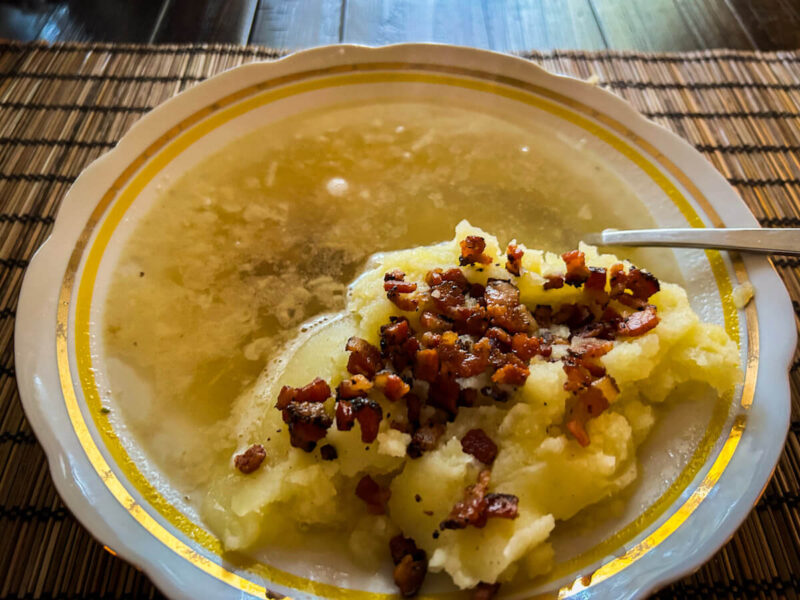Polish cuisine, in my experience, is centered around soups. I’m not a culinary expert or anything of the kind, so this is undoubtedly my personal preference coming to the fore: what has always caught my eye (and my tastebuds) in Polish cooking has been the soups.
Barszcz z uszkami is a treat beyond treats: we only have it once a year because the uszki are so time-consuming. It’s one of E’s favorites.
Żurek is such an odd-ball dish for Americans: soup made from a base of fermented rye flour? How weird. And how utterly delicious. It’s one of L’s favorites.
Ogorkowa? Pickle soup? “Get out!” was my first reaction. Who the hell makes soup out of pickles?! It’s absolutely perfect.
K likes most Polish soups, but she probably agrees with L and E that a simple rosół is the best. Babcia always makes it for us as our first dish in Poland, and a gentle, easy broth like that is the perfect thing after traveling.
And then there are the other: koperkowa, chłodnik, kapuśniak — the classics. But there are a couple of soups that stand above them all for me: flaczki (not because I love it so much — I do, but it’s not a favorite — but because I only get it in Poland: K absolutely is not a fan) and my hands-down favorite, kwaśnica. Not so much a Polish soup as a regional highlander soup.
We usually stick to soups in the winter and give them a break in the summer: having the stove on that long really warms up the house, and we want lighter meals in the summer. Except for rosół and koperkowa (none of us is really a chłodnik fan), the soups disappear.
Until the Girl asks K to fix that one soup — you know, with the potatoes and bacon bits.

And so we had for dinner a soup I have always thought of as a winter soup.
“We should do kwaśnica,” I will say some time in October or November.
“No, it’s not cold enough yet,” comes the reply.
But all our Girl has to do is ask for kwaśnica, and it can be 90 degrees outside, and K will not hesitate.